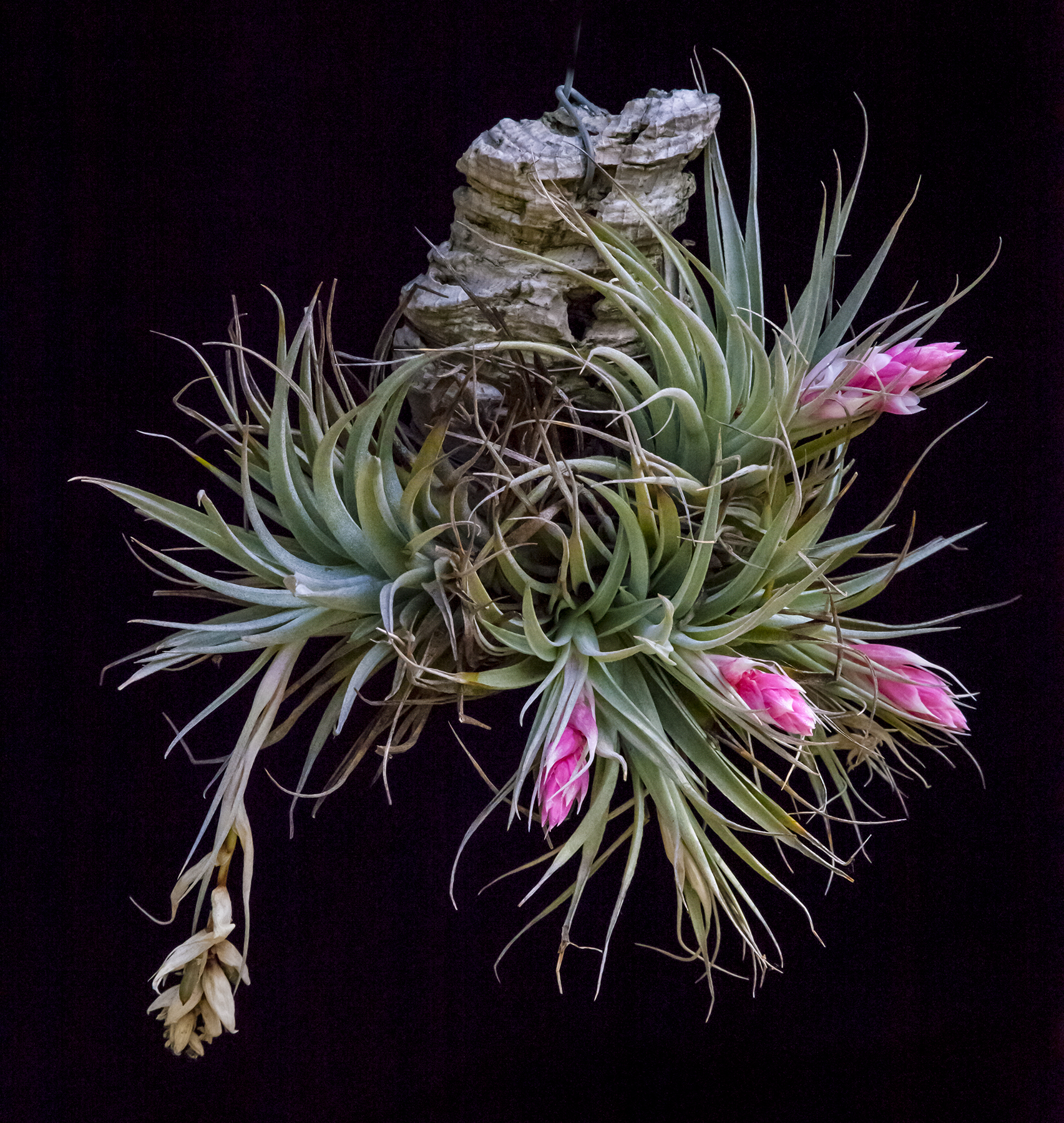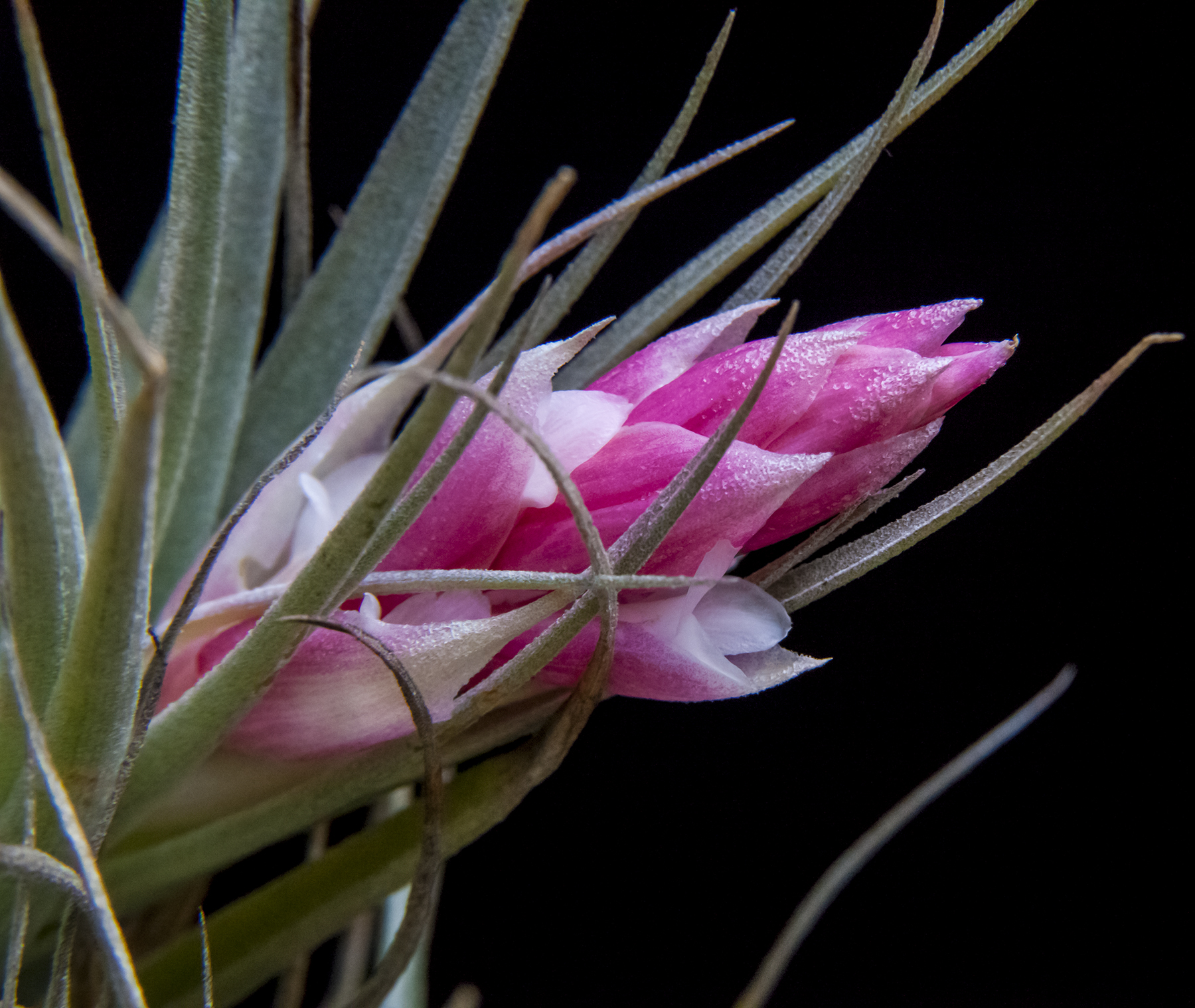|


.
|
Family: Bromeliad
Sub-Family: Tillandsioideae:
Genus: Tillandsia
Sub-Genus:
Native distribution and habitat: The plant’s distribution covers many hundreds of square kilometers. Argentina (Chaco, Corrientes, Entre Ríos, Formosa, Jujuy, Misiones, Salta, Santa Fe, Tucumán), Brazil (Rio Grande Do Sul), Paraguay (Alto, Amambay, Central, Cordillera, Guairá, Ñeembucú, Paraguarí, Presidente
Hayes), and Uruguay (Artigas), at altitudes up to 2,200 m.
Growth habit: T. recurvifolia is hardy and grows well under a myriad of conditions. Typical habitat is the Great Chaco region of Paraguay and Argentina, both in hygrophilic and dry forest dominated by Prosopis spp.. This area receives precipitation only two or three months a year, but torrential rains submerge the ground in large areas for weeks at a time. The terrain is mainly opulated by scattered scrub bushes and trees. It grows epiphytically on other plants upon which they depends for mechanical support but not for nutrients, they fix on
horizontal branches, on forks, cracks and thick bark where organic debris and atmospheric dust accumulate, they are also found on wires and cables where
they may receive more light. It grows along with T. vemicosa Baker and the more noticeable T. duratii. T. recurvifolia tends to grow singly or in small groups,
from sea level to 2200 m.
Foliage: Stiff, grey and recurved. Tillandsia called “air plants” absorb water and nutrients from the atmosphere. The foliage is covered by dense specialized peltate scales, which increase the reflection of sun radiation (decreasing the temperature) and permit the absorption of water and nutrients from the atmosphere. The peltate scales act as unidirectional water valves. They are capable of absorbing all the leaf surface water in liquid form, especially from the evening dew. Leaves are about 90 to 100 mm long x 12 mm at the base and taper evenly to a point.
Flowers: The scape is slender and long enough to exsert the simple inflorescence above the leaves. The imbricate, polystichous, and subglabrous floral
bracts are bright carmine. Gradually the bracts open out and back while the white corollas emerge. The three petals of the corolla form a small tube with flared tips. In Melbourne it flowers in Oct.
Seed: The elliptical seed pod (23mm long x 4 mm diameter) has a distinct point at the end.
Pups:
Cultivation: T. recurvifolia is easy to grow, drought tolerant, and will thrive within a broad latitude of care conditions
Availability: Often available.
|